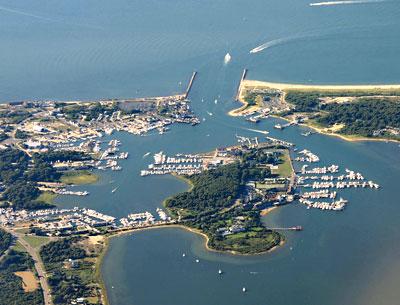Nature Notes: Dilution the Best Solution

Not only are we faced with more and more carbon dioxide in the atmosphere each year, but with global warming resulting from it and acidification of the seas. One might say we are in for calamitous times if we don’t somehow reverse these dangerous headlong trends. But how can we, especially in an age when we are so conscious of our own mortality and want to live life to the fullest? Planes, trains, and automobiles. Coal, oil, and natural gas. Self-indulgence? Yes. The need to survive? Surely.
Charity starts at home, they say, but fixing the South Fork, or the entire East End for that matter, won’t fix the rest of the world, which has never in its very long lifetime spun quite so wildly. However, we must face a dilemma, and the dilemma is this: We can’t abandon the home front because the rest of the earth may be doomed.
In a small way we are making progress locally, but we have a long way to go. Let’s take the problem of surface water pollution, for example. Our septic waters and runoff washes are befouling the inshore waters at an ever-increasing rate. It’s bad enough that the atmosphere is charged with nitrogen compounds and other polluting and toxic chemicals, but the nitrogen products from urination that are enriching the waters, as well as the medicines, cleaning agents, and you-name-it stuff that goes down our drains and runs off our roads and yards, is 10 times worse.
We can’t shut off all of the tens of thousands of factories, power generating stations, and foundries west of us all the way to China, but we have a good shot at cleaning up the runoff from precipitation that contributes to water pollution locally. Dealing with the stuff from septic systems and treatment facilities is another matter. Almost all groundwater eventually moves to the seas from the two aquifers that feed the South Fork. That which creeps south to the ocean does less harm than that which creeps north to the Peconic Estuary. The nearest tributaries get hit first, the harbors they feed second, and the Peconic waters ultimately get it all.
Even if we converted every polluting septic system into a new nonpolluting one at a cost of $30,000 or more in 2014, the pollution load into the estuary will worsen because the groundwaters upgradient are more nitrogen-charged than ever. At a foot per day, it will take 14 years for the groundwater to travel from, say, the Springs School to Accabonac Harbor, 44 years from the cemetery on Three Mile Harbor to the harbor itself.
The quickest way to clean the marine surface waters is by dredging. The late Norman Edwards, who had been a town trustee, had it all figured out. Dredge right and regularly and the harbors will be kept tolerably clean. With a master’s degree in oceanography and 30 years in the Coast Guard, culminating in a captainship, Norman knew the waters just about better than anyone. He got up a plan to routinely clear the channels and followed it with a grant application for East Hampton Town to buy its own dredge.
Yes, the dredge was expensive, about $600,000. But the state was going to pay half of that cost. The town trustees and town would split the difference. At the last minute the town pulled out — no wonder, the town was $27 million in debt, leading to the resignation of the town supervisor, Bill McGintee, before his term expired.
It cost $300,000 or more just to move a private dredge from an UpIsland site to, say, Napeague Harbor in Amagansett. It would cost very little to move a town-owned dredge out of Three Mile Harbor or Lake Montauk to dredge one of the town’s channels into the Peconic Estuary.
Dilution is still the best solution to pollution. The more water that comes in and out during each tidal cycle, the cleaner the water over all. Lake Montauk was once the largest freshwater body on Long Island until it was opened in the mid-1920s. It is more and more polluted from runoff and septic sources with each passing year. The Army Corps of Engineers, after a study that cost some $2 million, devised a dredge plan that would deepen the federal channel and produce 120,000 yards of clean sand to bolster the disappearing beach west of the west jetty. It was scheduled to happen 2013 at the latest.
Well, you know the outcome. Two patch jobs at a cost to the taxpayer of around $500,000 each were carried out in the first 10 years of the millennium. They produced no more than 3,000 or 4,000 yards of sand each. The sand disappeared into the depths and around Culloden Point in a few years after each dredging. The beauty of being connected to the Block Island Sound is that the sound’s waters are still the purest around, never having seen the brown or red or purple tide since records have been kept. I’m told the Corps is about to do another patch job this year or next. It’s simply not enough!
Take Napeague Harbor. Suffolk County is dredging the same west channel after dredging it in 2004. Since the west channel was dredged in 1988, the east channel has been closing at a steady rate and is now no longer. One can drive a four-wheel vehicle onto Hicks Island from Goff Point. So why are they doing the west channel? The county maintains that the town requested it in 2013. Oops, that would put the onus on a second administration, the one led by Bill Wilkinson.
Dredging is still the best and quickest answer to cleaning harbor waters. When are we going to learn? Apparently never.
Larry Penny can be reached via email at [email protected].
